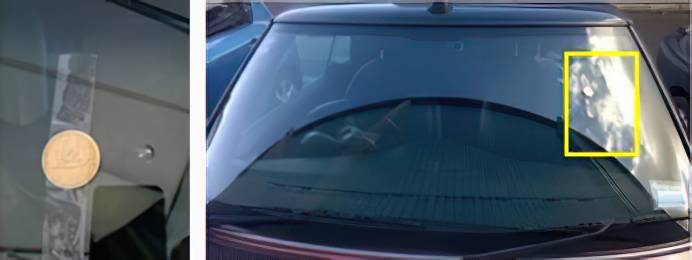Driving in the rain

Autumn brings rain to most parts of New Zealand and sometimes without warning, it buckets down. Rain can be dangerous on the road as it’s harder to see clearly and pools of water affect your traction. We’re sharing some tips on how to safely drive this rainy season.
Tyres are key
Your tyres have a lot to do with staying safe when roads are slick. Slick roads reduce the friction between the road and your tyres and this is what can cause hydroplaning, when a vehicle’s tyres travel on the water rather than gripping the road.
Make sure you have adequate tread—according to the NZTA, the legal minimum tread depth is 1.5mm but advisors say the grip of tyres in wet conditions reduces once tread is below 3mm. See how easy it is to check your tyre tread using a 20 cent coin.
You also need to check the tyre pressure too. You can usually find out the details on what the right tyre pressure is for your car on the inside of the driver's door. If it’s not there it might be inside the petrol flap or, failing that, try your vehicle handbook. An easy online option to check is through the EECA EnergyWise website which has a handy tool where you can check the tyre pressure that’s appropriate for your vehicle make.
Slow down, lights on
When it rains, especially those moments after an initial downpour, it’s important to go a lot slower than normal as steering, braking and maintaining control of your vehicle become more difficult.
Leave as much space between you and the car in front, though do try and follow their tracks (as it’ll be slightly drier where another vehicle has travelled). According to the NZTA, you should also be looking ahead 12 seconds for or any big puddles so you can slow down in time.
In the rain, it’s harder to see too, so make sure that when you’re driving slowly, you have as much visibility as you can with your lights on. If it becomes foggy, make sure you don’t turn your full beams on as all that happens is the light reflects back in the fog, and your park lights will do little to help either (worse still, they make it hard for oncoming traffic to see clearly). Instead you want your fog lights on which have a wide, low beam.
Leave more space
Unfortunately, not all drivers ease off the accelerator when conditions are wet. Because it’s difficult to stop quickly in rainy conditions, give yourself at least four seconds between yourself and the car in front of you. To assess this, pick a fixed object on the road such as a street sign or light. Watch the car in front of you pass it, then start counting. It should be four seconds before you pass the same object.
Check your wipers
Properly functioning wipers are important when driving in the rain, as having a clear view when it's bad weather is key for safe driving. It is recommended that you replace your wiper blades every 6-12 months as the rubber on the blades can deteriorate over time due to extreme heat, cold and road dirt. As blades age, they lose their flexibility and are not able to wipe cleanly. If your wipers are squeaking, leaving streaks or smears on the windscreen then it is time you had them checked.
To care for your wipers, clean them regularly with a non-abrasive glass cleaner or windscreen washer solvent with a soft cloth or cotton swab.
At Smith&Smith® we offer free wiper inspections, so if you’re unsure if your wipers need replacing, pop in and let one of our friendly technicians take a look. If your wipers do need replacing, you can purchase them from us and we will fit them free of charge.






